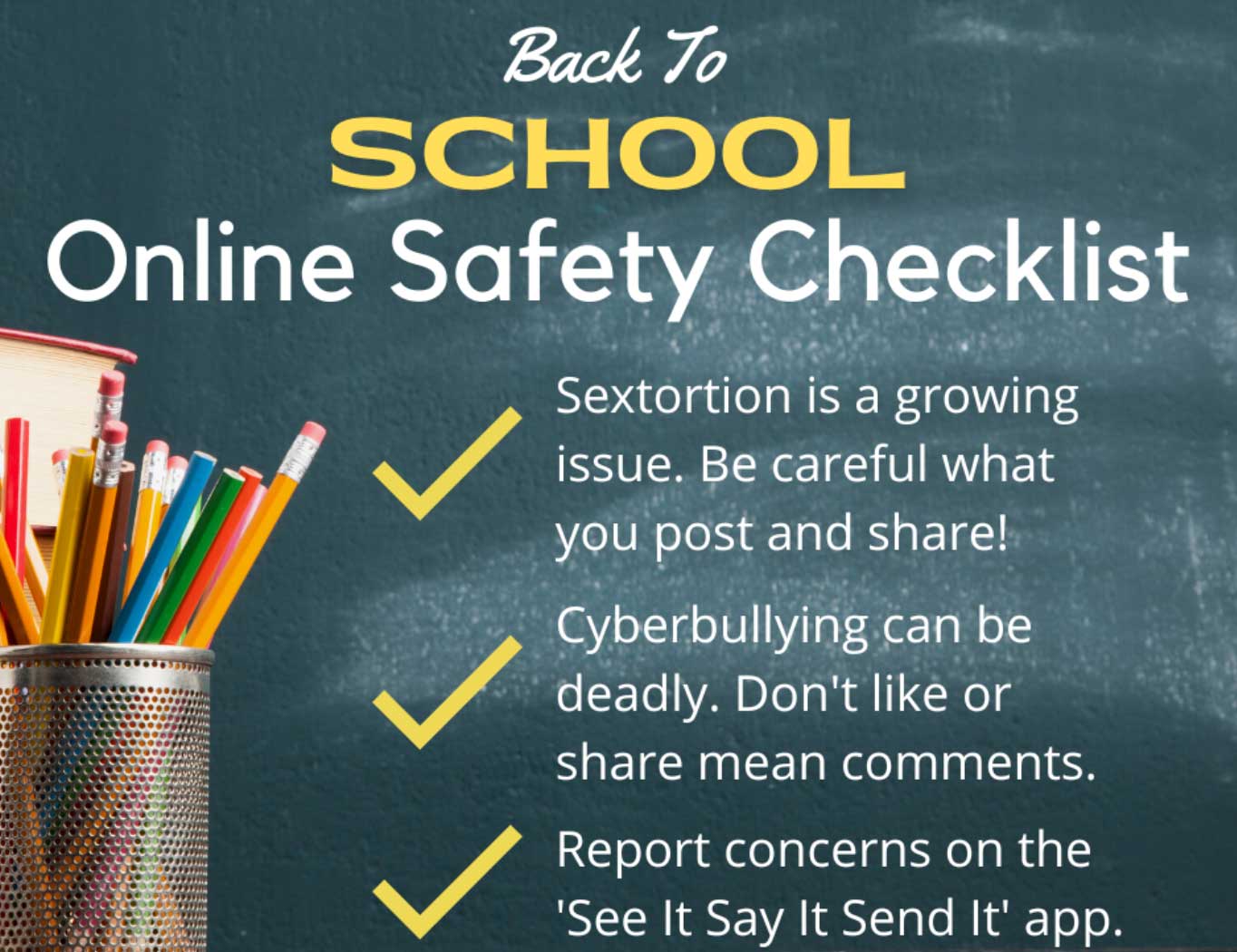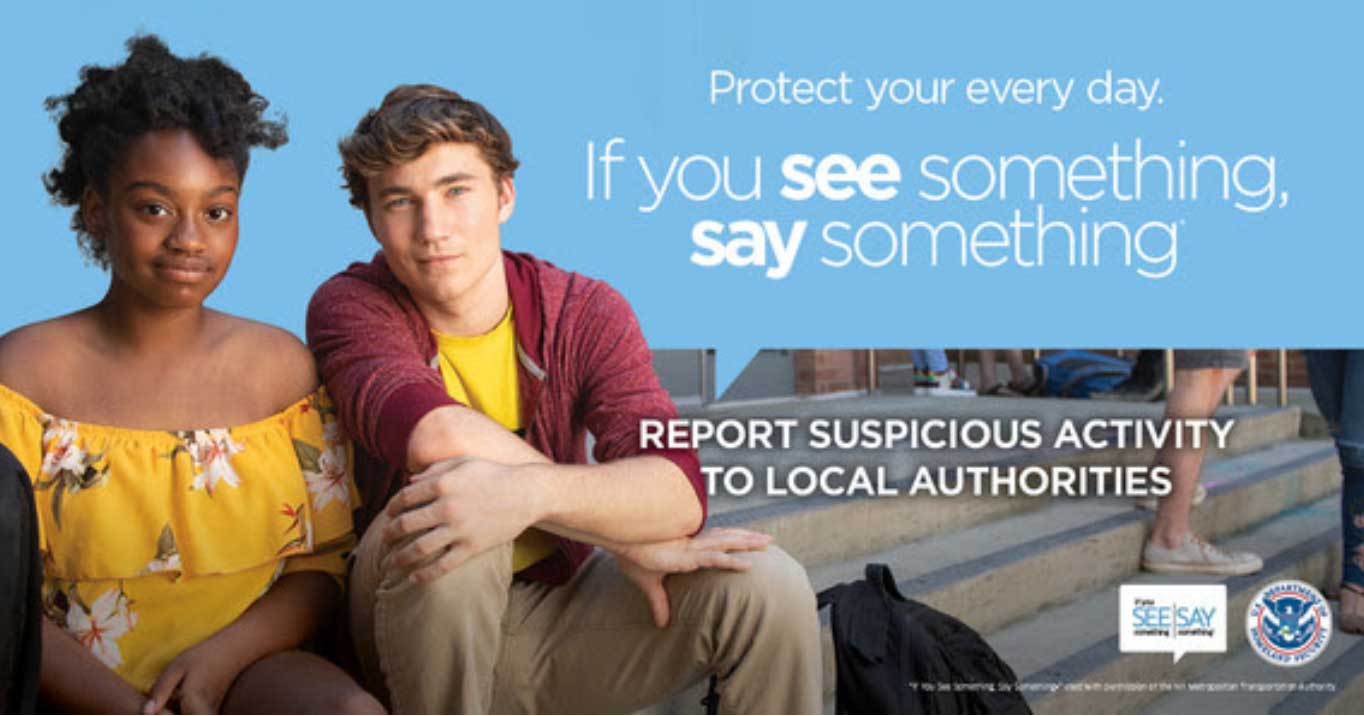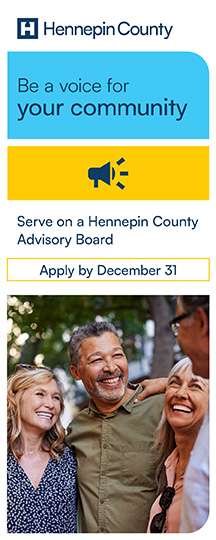Always Be Careful: The ABCs Of School Safety
By Veronica Marshall, Minnesota DPS
A new backpack: check. Back-to-school night: already on the calendar. Minnesota parents are ready to start the new school year off right. And while it may not be on their to-do list, the Minnesota Department of Public Safety (DPS) is making sure parents don’t forget to do a back-to-school safety check before the first bell rings.
DPS knows preparation is a key element to succeeding in school – and the same can be said when it comes to safety. This week, DPS is sharing important back-to-school tips to help Minnesota families, whether they have kids in kindergarten or college, prepare for all types of emergencies and get straight As in safety.
See Something, Say Something
Students may notice something out of place at school or on the way to school. They may be unsure about how to take action. HSEM, in partnership with the U.S. Department of Homeland Security, encourages anyone, including children, to “See Something, Say Something.”
- Report suspicious behavior. Do you see a stranger taking pictures of buildings or entering or exiting a restricted area? Tell a trusted adult or call 911.
- Do not touch suspicious objects. Unattended packages may contain dangerous items. Do not let curiosity get the best of you. Move a safe distance away and report it immediately.
- Do not wait for someone else to say something. An immediate call to law enforcement could be the one that makes the difference.
Driving The Safety Agenda
A student’s safety doesn’t begin when they walk through the school’s front door. It starts the moment they leave home and hop in the car for the ride to school or walk across the street to the bus stop. Parents know how hectic it can get driving children to class and to various after-school activities. The Minnesota Department of Public Safety encourages parents to talk with their children about the dangers that exist between home and their learning environment.
Whether your kids are riding the school bus, or you’re driving on the road with them, we need to be aware of the laws meant to keep us all safe. The Minnesota State Patrol reminds you that school bus safety is for both motorists and students.
Motorists should know:
- In Minnesota, motorists must stop at least 20 feet from a school bus that is displaying red flashing lights and an extended stop arm when approaching from the rear and from the opposite direction on undivided roads.
- Motorists should slow down, pay attention and anticipate school children and buses, especially in neighborhoods and school zones.
- The best way to be aware of your surroundings at all times is to put the distractions away.
- Parents, tell your students:
- When getting off a bus, look to be sure no cars are passing on the shoulder.
- Wait for the bus driver to signal that it’s safe to cross.
- When crossing the street to get on the bus or to go home, make eye contact with motorists before proceeding.
Buckling up is a lifesaver. Children rely on adults for proper car seat use. The Office of Traffic Safety reminds you to make sure kids are properly buckled when driving them to school, daycare and activities this school year.
When driving your kids from one activity to the next during the school year, it’s easy to get lost in thought, check your phone or turn around to stop a backseat argument. The Office of Traffic Safety reminds you that distracted driving is dangerous driving.
Efforts such as the hands-free cell phone law are helping save lives, but we all see way too many drivers focusing on everything but the road. Minnesotans are making progress reducing distractions, but improvement is needed.
Safety At School
A student’s ability to feel safe at school begins with preparation. Schools do this by working with their emergency managers and the Minnesota School Safety Center to conduct facility assessments, develop emergency operations plans for all types of hazards, and train their school resource officers.
Every school has its own unique plan to adequately serve its own unique student and staff population. No two schools will have the same safety plan. Families with children attending different schools should become familiar with each individual school’s plan.
Minnesota’s School Safety Center (MnSSC) is a non-regulatory program within the Homeland Security and Emergency Management division of the Department of Public Safety. MnSSC team members work with hundreds of public, private, charter and tribal schools, educators and law enforcement across the state every year. Any work done with schools in voluntary. But a parent’s participation is key when it comes to school safety:
- Be familiar with the school’s emergency response plan for a threat or hazard. This includes procedures that will determine whether staff and students stay or go, along with evacuation/relocation and reunification/student release information. This information is usually located in the school handbook.
- Talk to your child about the five required lockdown, shelter-in-place, fire and severe weather drills that will occur. Make sure they know how to act during these drills and how to put those drills to practice during a real emergency.
- Review any special needs. For example, if your child has asthma, how would he or she get their inhaler in an emergency at school?
The See It, Say It, Send It App
In today’s world, students spend a significant amount of learning time on electronic devices. The internet has become an essential tool for children of all ages, whether it’s used to research schoolwork or communicate with peers. However, going online can make kids vulnerable to predators.
What’s more? Many students are carrying a cell phone with them at all times. While convenient, their connectivity puts potential threats directly in their back pocket. The Minnesota Department Public Safety Bureau of Criminal Apprehension (BCA) encourages parents to discuss proper device etiquette with students before they go back to school.
There’s good reason why parents and educators alike are worried about digital dangers. The National Center for Missing and Exploited Children (NCMEC) says one in seven children online is being groomed.
- Predators are actively working to meet children on any app and on any online game. They will use information like a child’s school, team names, teacher names and more to build a relationship with them.
- Sextortion is a growing problem. Talk to your children about the risks involved in sending or sharing provocative images.
- Cyber bullying can have deadly consequences. Talk to your kids about being a good digital citizen. Remind them not to make, “like” or share mean comments.
- Report instances of inappropriate online contact to the new BCA tip app See It Say It Send It.
Talking about safety online early and often is the best way to keep your child safe. Conservations should start when they’re young and last through college. Get some conversation starters at: http://www.netsmartz.org/Parents.
The BCA launched a tip app in 2021 called – See It, Say It, Send It – to make it easier for people to report threats of violence targeting Minnesota schools. The BCA’s See It, Say It, Send It app is available to all students, parents and staff. Tips can be anonymous.
- The BCA works with our partners to plan a response when incidents occur, but the tip app is designed to help us learn about threatened and planned violence — so that we can try to stop it before it occurs. One tip can save a life.
Since it was launched, the BCA has received about two dozen tips through the tip app. More importantly, nearly 400,000 Minnesotans – 7 percent of the total population – have downloaded the app.
Kids may know how to escape their burning home, but what about their school or dorm room? Fire drills play a big part in classroom safety by preparing students for the unexpected and teaching them to get outside quickly. Here’s what they should know:
- Take fire alarms seriously.
- When the alarm sounds, get out and stay out.
- Younger children should understand they should not hide from fire.
- Younger children should listen to their teacher’s instructions if there is a fire drill or fire alarm at school.
- Know at least two escape routes beforehand.
- Identify the outside classroom meeting spot.
More information about school fire drills is available from the National Fire Protection Association.
Building relationships is key to keeping schools safe. There’s no easy button when it comes to keeping schools and students safe. That’s why our Minnesota School Safety Center is working with educators across the state to encourage relationship building ahead of the next worst-case scenario. The key to their work is prevention. This includes building connections among educators, parents, law enforcement and students well before the next emergency.















